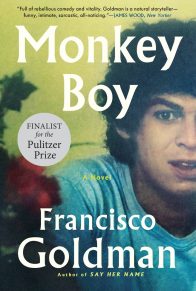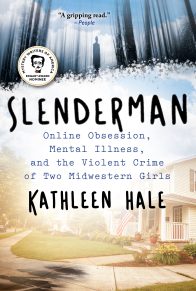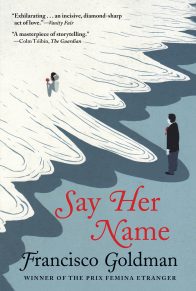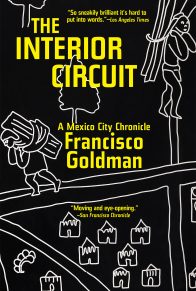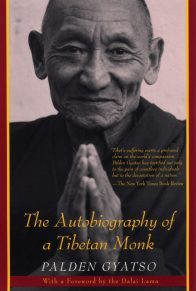One Sunday afternoon a few hours before he was bludgeoned to death in the garage of the parish house of the church of San Sebastián, in the old center of Guatemala City, Bishop Juan Gerardi Conedera was drinking Scotch and telling stories at a small gathering in a friend’s backyard garden. Bishop Gerardi’s stories were famously amusing and sometimes off-color. He had a reputation as a chistoso, a joker. “In a meeting with him, you would get this whole repertoire of jokes,” Father Mario Orantes Nájera, the parish’s assistant priest, told police investigators two days later. “I wish you could have known him.” Guatemalans admire someone who can tell chistes. A good chiste is, among other things, a defense against fear, despair, and the loneliness of not daring to speak your mind. In the most tense, uncomfortable, or frightening circumstances, a Guatemalan always seems to come forward with a chiste or two, delivered with an almost formal air, often in a recitative rush of words, the emphasis less in the voice, rarely raised, than in the hand gestures. Even when laughter is forced, it seems like a release.
Guatemalans have long been known for their reserve and secretiveness, even gloominess. “Men remoter than mountains” was how Wallace Stevens put it in a poem he wrote after visiting “alien, point-blank, green and actual Guatemala.” Two separate, gravely ceremonious, phantasmagoria-prone cultures, Spanish Catholic and Mayan pagan, shaped the country’s national character, along with centuries of cruelty and isolation. (At the height of the Spanish empire, ships rarely called at Guatemala’s coasts, for the land offered little in the way of spoils, especially compared with the gold and silver available in Mexico and South America.) In 1885, a Nicaraguan political exile and writer, Enrique Guzm”n, described the country as a vicious, corrupt police state, filled with so many government informers that “even the drunks are discreet”—an observation that has never ceased to be quoted because it has never, from one ruler or government to the next, stopped seeming true.
Bishop Gerardi was a big man, and still robust, though he was seventy-five years old. He was over six feet tall and weighed about 235 pounds. He had a broad chest and back; a prominent, ruddy nose; and thick, curly gray hair. After the murder, his friends recalled not only his sense of humor and affection for alcohol but also his voracious reading, his down-to-earth intelligence, and a nearly clairvoyant understanding of Guatemala’s notoriously tangled, corrupt, and lethal politics, which made him by far the most trusted adviser on such matters to his superior, Archbishop Pr’spero Penados del Barrio, a less worldly figure. Soon after Penados was named archbishop, in 1983, he had recalled Gerardi from political exile in Costa Rica. As the founding director of the Guatemalan Archdiocese’s Office of Human Rights (Oficina de Derechos Humanos del Arzobispado de Guatemala), which was usually referred to by its acronym, ODHA—pronounced OH-dah, Gerardi became one of the Catholic Church’s most important and visible spokesmen and leaders.
The gathering in the garden on that last afternoon of Bishop Gerardi’s life was a celebration of the completion of Guatemala: Never Again, a four-volume, 1,400-page report on an unprecedented investigation into the “disappearances,” massacres, murders, torture, and systematic violence that had been inflicted on the population of Guatemala since the beginning of the 1960s, decades during which right-wing military dictators and then military-dominated civilian governments waged war against leftist guerrilla groups. An estimated 200,000 civilians were killed during the war, which formally ended in December 1996 with the signing of a peace agreement monitored by the United Nations.
The Guatemalan Army had easily won the war on the battlefield, but making peace with the guerrillas had become a political and economic necessity. Still, the Army was able to dictate many of the terms of the agreement and engineered for itself and for the acquiescent guerrilla organizations a sweeping amnesty from prosecution for war-related crimes. This “piñata of self-forgiveness” was an ominous beginning for an era supposedly based on such democratic values as the rule of law and access to justice, as well as demilitarization.
The peace agreement provided for a truth commission sponsored by the UN—the Historical Clarification Commission—which was intended to establish the history of the crimes of the previous years. But many human rights activists, including Bishop Gerardi, who had participated in the peace negotiations, doubted that the UN commission would be able to provide a thorough accounting of events. The commission was not permitted to identify human-rights violators by name or assign responsibility for killings. Testimony given to the commission could not be used for future prosecutions. As a counterweight, under Gerardi’s guidance, ODHA initiated a parallel and supportive investigation, the Recovery of Historical Memory Project (Recuperación de la Memoria Histórica) known as REMHI (REM-hee), which produced Guatemala: Never Again. Bishop Gerardi wrote an introduction to the report.
On Wednesday, April 22, Bishop Gerardi, along with Ronalth Ochaeta, a thirty-three-year-old lawyer who was the executive director of ODHA, and Edgar Gutiérrez, the thirty-six-year-old coordinator of REMHI, held a press conference to brief reporters on the general content of Guatemala: Never Again. When a reporter asked if they were taking extra security precautions, Gerardi ceded the microphone to Gutiérrez, and turned to whisper in Ochaeta’s ear, “Qué vaina,” which is not exactly translatable, but in this context meant something like, “damn.” Shortly after the murder, Ochaeta saw a newspaper photograph that captured the instant after that whispered exclamation. The bishop had just settled back in his chair, a look of grim preoccupation on his face.
The next evening, Thursday, April 23, Bishop Gerardi and his associates invited journalists and influential personages to a dinner in the Archbishop’s Palace in the sprawling Metropolitan Cathedral complex, near the church of San Sebastián. That night, copies of the first two volumes of Guatemala: Never Again—”The Impact of the Violence” and “The Mechanisms of Horror”—were handed out. While the guests dined, Bishop Gerardi explained REMHI’s methodology, and afterward he took questions. Over a two-year period, he said, some 800 people had undergone intensive training for interviewing and collecting testimony for the investigation. Operating from thirteen regional centers, the ‘reconciliation facilitators’ had spanned out across the country. Guatemala’s population is at least 60 percent Mayan Indian, and the Maya, the rural peasantry especially, had borne the brunt of the war’s carnage. Well over half of the interviews for Guatemala: Never Again had been conducted in fifteen Mayan languages and the rest in Spanish.
On Friday, April 24, Guatemala: Never Again was formally presented in the cathedral. The cavernous house of worship—an austerely sturdy, earthquake-scarred, 150-year-old neoclassical edifice—was packed with diplomats, politicians, members of nongovernmental organizations, former guerrillas, journalists, human-rights activists, and others. The only body not represented that it would seem should have been was the government of the president of Guatemala, Álvaro Arzú Irigoyen.
Television screens were installed in the two aisles off the nave of the cathedral so that the people sitting and standing there could watch the ceremony at the altar. Despite the gravity of the report, the mood was quietly jubilant. To many it seemed as if Guatemala really was on the verge of a new era. Only twelve days earlier President Arzú had announced on national television that the country had been removed from the UN Human Rights Commission’s list of the world’s worse human-rights violators, a status it had held for nineteen years and which had led to UN sanctions, intrusive observer missions, and periodic suspensions by the U.S. Congress of military aid (although covert and other forms of military assistance, through the CIA and surrogate nations such as Taiwan and Israel—which, for example, built the Guatemalan Army an ammunitions factory—had continued).
Along with the peace accords, the end of Guatemala’s position as a pariah state cleared the way for renewed foreign aid and assistance. And now the Church, through REMHI, was initiating a truthful accounting of the past—an accounting that, Bishop Gerardi had stressed on many occasions, was crucial for repairing the country’s shredded social fabric and for ensuring that human-rights abuses would no longer be protected by an official culture of silence and lies or by a legal system that effectively gave certain institutions and sectors of society carte blanche to commit crimes.
In the cathedral that evening, bishops from every diocese that had been involved in REMHI were assembled at the altar. (Only one of twelve dioceses had declined to participate.) A Lutheran pastor was also invited to speak. “When we began this task, we were interested in learning, in order to share, the truth,” Bishop Gerardi said in his speech, “to reconstruct the history of suffering and death, discover the motives, understand the how and why. Portray the human drama, share the pain, the anguish of thousands of dead, disappeared, and tortured. . . . The REMHI project has been a door thrown open so that people can breathe and speak in liberty, and for the creation of communities of hope. Peace is possible, a peace that arises from the truth for each and every one of us.”
After the ceremony, there was a reception in the Archbishop’s Palace. The crowd, including some 600 of the people who had worked on REMHI in the field, pressed into one of the old colonialstyle patios for a traditional repast of tamales and coffee, and to congratulate Bishop Gerardi. Edgar Gutiérrez soon noticed that Gerardi had withdrawn to the end of a corridor alongside the patio and was standing in the shadow of one of the arches, silently observing the crowd. Gutiérrez approached and asked if he felt overwhelmed by so many people. The bishop answered, somewhat vaguely, “It’s turned out to be a wonderful night. Hopefully it won’t rain.” Then he asked, “And you, Edgar, have you made arrangements to leave the country with your family, to go study somewhere until the waters here calm down?”
“They’re not calm, Monseñor?” asked Gutiérrez.
“Well, they’ll be much more agitated when they finish reading REMHI.”
“So then I still have time, Monseñor,” said Gutiérrez, with a touch of bravado.
During the final weeks and days of his life, Gerardi had several times warned his young associates to take precautions. He had urged Ronalth Ochaeta to explore the possibility of a scholarship to study at a European university, or to look for a job with an international organization. But Gerardi seemed much less concerned about his own safety. Guatemala, after all, remained a fervently Catholic country, despite a surge in conversions to evangelical Protestantism, particularly during the last decades of the war. Gerardi may have assumed, as everyone else around him apparently did, that his status as a highly visible eminence in the Catholic Church protected him.
Sunday, the last day of Bishop Gerardi’s life, began normally enough. Margarita López, for more than twenty years the cook and housekeeper at the parish house, served him morning coffee—strong, the way he liked it—in his room. Bishop Gerardi slept in a simple wood-frame bed. A crucifix hung on the wall above it, and his dentures were in a glass of water on a nightstand. The room was sparely furnished, with bookshelves, a desk, a stereo, and a television set in the corner. Bishop Gerardi donned his robes, pulled on his heavy bishop’s ring, and gave the seven AM Mass. Afterward he was visited by his nephew Javier and Javier’s children. The assistant priest, Father Mario, later recalled how absorbed the Bishop was while watching the children play Nintendo in his room. Father Mario, who was then thirty-four and had shared the parish duties for eight years, was among the first to notice how unusually Bishop Gerardi was dressed that day, in blue jeans and a red-checked shirt instead of his black suit and collar.
At about eleven that morning, Ronalth Ochaeta came to the church of San Sebastián to pick Gerardi up and take him to El Encinal, a wooded hillside residential community overlooking Guatemala City, where Dr. Julio Penados, the Archbishop’s brother, was giving the celebration for REMHI. They first drove to Ochaeta’s house to collect his wife and children—his “grandchildren,” as Bishop Gerardi liked to say. Ochaeta, a small, stocky man with a cherubic mestizo face, had been working at ODHA for nearly ten years, and Gerardi, it was often remarked, had come to regard him as a kind of son. On the way to the party, Gerardi excitedly recounted impressions of the events of Friday night, and said, “Now I can retire in peace.” He played with Ochaeta’s children, giving them pieces of chocolate as a prize if they could reproduce the funny faces he made.
The guests at that final Sunday afternoon celebration were mostly colleagues from ODHA and family members. Many recalled later that “Monse”—short for Monseñor—was in an ebullient mood, and they commented on the unaccustomed informality of his clothes. He wore a beige jacket over his jeans. Monse looked, a woman guest told him, as if he’d suddenly shed ten years. There was festive banter, drinks, and, later, bowls of stewed garbanzos and beef. The sky was a brilliant placid blue, the air fresh and fragrant with the smell of pine and eucalyptus trees.
Naturally, when people who were there recount what they remember about that afternoon, they emphasize details that in hindsight seem charged with premonition. And so they recall that at one point Bishop Gerardi said to Ronalth Ochaeta and Edgar Gutiérrez, “You two shouldn’t go around together so much. They’ll say you’re huecos“—Guatemalan slang for homosexuals. When the laughter subsided, he insisted he was serious. “Remember, now is when the smear campaigns begin,” he warned.
They recall that the main subject of conversation, of course, was the REMHI report. “Now we know what happened, but we don’t know who gave the orders,” Bishop Gerardi remarked at one point. “I think we need to begin another little project,” a new report on “the intellectual authors” of the war’s atrocities. He let those words sink in, then cackled mischievously. And Gutiérrez responded, “Ay, Monseñor, if we do that they’ll kill us for sure.”
And they recall that Edgar Gutiérrez’s small son fell from a swing made from a rubber tire suspended by a rope from a tree and cut his lip open badly and that the other children were shouting, “There’s blood! There’s blood!” and that it was after that, around four-thirty, that the party slowly began to break up. Gutiérrez’s mother-in-law, who was visiting from Mexico, was so perturbed by Bishop Gerardi’s warnings that she decided that afternoon to take her three grandchildren back with her to Mexico City.
Ronalth Ochaeta, with his wife and two children in the car, drove Bishop Gerardi back to his home at the church of San Sebastián, in a still mostly residential neighborhood Zone 1. (Guatemala City is demarcated into numbered zones, most encompassing several neighborhoods—colonias or barrios—which often have names of their own.) San Sebastián was only a few blocks north of the central plaza fronting the cathedral and the recently renamed Palace of Culture—formerly the National Palace, the seat of so many dictatorships. Between San Sebastián and the palace was the presidential residence. They reached the church sometime between five-thirty and five-forty-five. “Don’t you have Mass?” Ochaeta asked. The bishop said that Father Mario was giving the six o’clock Mass. They spoke a bit about a trip Gerardi was to take to a conference in Mexico on Wednesday, and Ochaeta assured him that everything was arranged. Bishop Gerardi got out of the car, turned to wave good-bye, and went inside the parish house.





